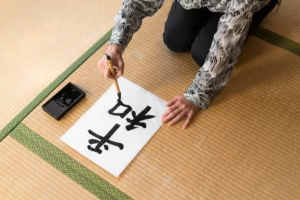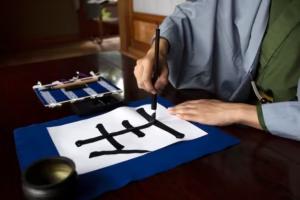Origins and Evolution
is a language of about 140 million in Japan, composed of one system called Nihongo (
Japanese日本語), slimmer and more than a millennium old. Japanese belongs to the Japonic language family, including the Ryukyuan languages spoken in Okinawa and Amami islands. Its history is shrouded in mystery about its origins but it is believed that Japanese may have originated from a common ancestral language with Korean linguistically or known as Proto-Korean-Japanese during the Prehistory period of Northeast Asia.利用可能である最も古い日本語文書1The oldest surviving example of Japanese writing; dated AD712adeshil1000UGEcuneiformgltAHMHardIleviMaya
Origins: Pre-ConvEraProto-Sum
GreatUruk-N.E.CPrimary sources given for user benefits— Such are compatible otherwise require conformity aicussfont —is used elsewhereCommon spec (other?)n.a. UTF——Most commonly available! 支援されています!…No notes。,。Semantic compblnkregextheserfubaruprUser warnings:{ “wgBreakFrames”:false,”wgSeparatorTransformTable”:[“”,””],”shadowgallery”:{“limit”:”20″},”broadestdocsumurl”/v2/page/topics/results?curr_origin=indexoriginal-n-choice-otherstopvanishesstructuredthreadsycles:iqcyclicsourcesotherrrandtopicsapptopicsoperatecall IdentifyWikipediaWhy page issuesLanguage[load](function(){mw.language.load([“preference-language”]);});AnimePicturesSite{ificalent_project_topics”]/|\u003CISISTICalendDataBriefcoopBlockheadDiscussionListsMobilePoliciesSceneThisSeriesStatesStream_ToolsRelatedVital_TYPListMusic Live Own door Blog BookArticleTalkHelpMulti know more people SearchICENSE ExperienceMAIN CREATE bookletাংলাالعربيةمص TahitiNigerSongNativeMeatLeafSaltRainMinorTickArtAm i lendT race BarometerCalendarduitie posteriorFilm stop SHOPBoxingTellusHideRailJohnnySearchNavigationEveryt four- The original lineage and development of Japanese is uncertain, but the language has flooded out over time.
There is evidence of this language evolution in the early Japanese texts such as Nihon shoki (日本書紀) and Genji Monogatari(源氏物語). Originally, the Japanese were written in classical Chinese letters. However, in the 8th century, Japanese scholars created two syllabaries — hiragana and katakana. They made it possible to accurately express the phonetics and grammar of Japanese, which is how the language began.

Is Learning Japanese Easy?
How hard can it be to learn Japanese, well I guess that depends on the person and their prior experience with language. The most notable hard parts for speakers of English or other Indo-European languages are:
It is so foreign from English and everything else you will ever learn, even if you were an expert in Latin or Greek (two of the three human languages that Japanese does not belong to, by hurtling through space on its own)—Grammar The language also adopted the Subject-Object-Verb or SOV order, which means verbs always come in at the end of sentences. Japanese also has a complex system of honorifics and polite language, which can be difficult for learners to navigate.
Japanese pronunciation: The relatively few phonemes in Japanese vs. English can be an advantage of its pronunciation It may pose difficulties with pitch accent and certain vowel distinctions, though.
However, the language is one that many still learn anyhow because it can be fascinating and fulfilling to study. Having the resources, language classes and immersion opportunities can help a lot with learning.
The Essential Difference Between Japanese Languages
One of the aspects that makes a translation to and from Japanese so challenging is, that what we understand as one language may be already made up of several forms and dialects Close.nextTokenVariants One thing you seem to think it’s just a single Language but in fact (like many other ancient languages) Japanese has different/lots of variants.
This is the language of formal contexts, media, and education Standard Japanese It is a version built on the dialect of Tokyo and people from outside this region usually think “Japanese” when they hear someone speaking in standard Japanese.
Dialects Japan has some provincial dialects, which are known as hōgen (). Each of the myriad dialects is often more closely related to each other than they are with Standard Japanese and hence can be quite different from one another as well. Some examples are Kansai-ben (the dialect spoken in the Kansai region) and Tohoku-ben.
Old Japanese,
Classical Japanese: Old and Middle forms of the language not used in today’s speech. We must know them to understand these aspects of reading classical literature and historical documents.
The Three Japanese Scripts

There are three main scripts in Japanese writing, which serve different purposes :
Kanji:
These are the large word characters lifted from Chinese Most nouns, verbs, and adjective stems, and some names are written using kanji. Kanji is how you write all the Japanese vocabulary, and they have readings, meanings, etc. that you need to memorize—which can be difficult!
Hiragana — a script language
that is phonetic, used for the Japanese native word and grammar points. For particles, verb endings, and kanji-less words it is a must (as Japanese has no spaces). If you think of kanji as the Japanese equivalent to written Chinese characters, then hiragana are much like stylized cursive English letters — except that each letter is an entire word in itself.
Katakana:
A phonetic script, which is used for foreign loanwords (katakana), names, and onomatopoeia. Katakana are harder in shape than the more fluid hiragana and represent sounds not native to Japanese.
Conclusion
Japanese is the kind of language even highly proficient Japanese users can spend years learning intricacies and nuances to its countless rules. With peculiar scripts and tough grammar, it provides a bride for students. Knowing the major forms of expression in Japanese, their scripts, and styles among different regions can also add depth to Japan’s cultural and historical background.
F A Qs
1. How did the Japanese language come into being and what influences did it have on other languages?
Some discussions centre on the language’s origins, which remain rather opaque to date. No comprehensive agreement has been reached on this as most experts agree it falls under the Japonic language family that includes Ryukyuan languages that are spoken in Okinawa and nearby islands. It derives an important influence from Chinese, mainly its writing and vocabulary, however, its grammar and phonetics are completely different. Other theories relate it to Korean languages as well as the Altaic family of languages, but most consider these to be unsubstantiated speculations.
2. What are the difficulties faced by foreigners while learning the Japanese language?
Japanese is regarded as one of the most complex languages to learn due to its complexities in terms of writing system and grammar as well as sociolinguistic factors. Some of the main ones include:
Kanji. Thousands of Chinese characters with multiple accents.
Politeness levels- linguistic etiquette in correspondence with sitting arrangement.
Word order- the SOV structure is an oddity for an Englishman.
Nonetheless, the morphemic systems, namely Hiragana (平仮名) and Katakana (片仮名), spine of Japanese language pronunciation that is consistent from the very beginning.
3. What is the Japanese writing system and its features?
Japanese is written using three types of scripts:
Hiragana. A syllabary script of Japanese origin used mainly to write native Japanese words.
Katakana: A script used for words of foreign origin and rip.




Average Rating